html — Почему не работает ruqiered и autofocus в Модальном окне
Задать вопрос
Вопрос задан
Изменён 4 месяца назад
Просмотрен 76 раз
Не работает required и autofocus в модальном окне как пофиксить?
<!DOCTYPE html>
<html lang="en">
<head>
<meta charset="UTF-8">
<meta name="viewport" content="width=device-width, initial-scale=1">
<title>JobBoard</title>
<link rel="stylesheet" href="https://cdn.jsdelivr.net/npm/[email protected]/font/bootstrap-icons.css">
<link rel="preconnect" href="https://fonts.googleapis.com">
<link rel="preconnect" href="https://fonts. gstatic.com" crossorigin>
<link href="https://fonts.googleapis.com/css2?family=Istok+Web:wght@400;700&display=swap" rel="stylesheet">
<link href="https://cdn.jsdelivr.net/npm/[email protected]/dist/css/bootstrap.min.css" rel="stylesheet">
<script src="https://cdn.jsdelivr.net/npm/[email protected]/dist/js/bootstrap.bundle.min.js"></script>
<link rel="stylesheet" href="css/style.css">
</head>
<body>
<header class = "header">
<div>
<nav>
<div>
<a class = "navbar-logo" href="#"><img src="images/logo.png" alt="Job Finder"></a>
<button type="button" data-bs-toggle="collapse" data-bs-target="#navbarNav" aria-controls="navbarNav" aria-expanded="false" aria-label="Toggle navigation">
<span></span>
</button>
<div>
<ul>
<li>
<a href="#">Employers</a>
</li>
<li>
<a href="#">Portfolio</a>
</li>
<li>
<a href="#">About us</a>
</li>
<li>
<a href="#">Team</a>
</li>
</ul>
<button type="button" data-bs-toggle="modal" data-bs-target="#signUpModal">
Sign Up
</button>
</div>
</div>
</nav>
</div>
</header>
<footer></footer>
<!-- Modal window -->
<div tabindex="-1" aria-labelledby="signUpLabel" aria-hidden="true">
<div>
<div>
<div>
<h5>Registration</h5>
<button type="button" data-bs-dismiss="modal" aria-label="Close"></button>
</div>
<div>
<form novalidate>
<div>
<label for="username">Username</label>
<input type="text" placeholder="Zesshi" name="username" nrequired>
</div>
<div>
<label for="userEmail">Email</label>
<input type="email" placeholder="Zesshi@mail.
gstatic.com" crossorigin>
<link href="https://fonts.googleapis.com/css2?family=Istok+Web:wght@400;700&display=swap" rel="stylesheet">
<link href="https://cdn.jsdelivr.net/npm/[email protected]/dist/css/bootstrap.min.css" rel="stylesheet">
<script src="https://cdn.jsdelivr.net/npm/[email protected]/dist/js/bootstrap.bundle.min.js"></script>
<link rel="stylesheet" href="css/style.css">
</head>
<body>
<header class = "header">
<div>
<nav>
<div>
<a class = "navbar-logo" href="#"><img src="images/logo.png" alt="Job Finder"></a>
<button type="button" data-bs-toggle="collapse" data-bs-target="#navbarNav" aria-controls="navbarNav" aria-expanded="false" aria-label="Toggle navigation">
<span></span>
</button>
<div>
<ul>
<li>
<a href="#">Employers</a>
</li>
<li>
<a href="#">Portfolio</a>
</li>
<li>
<a href="#">About us</a>
</li>
<li>
<a href="#">Team</a>
</li>
</ul>
<button type="button" data-bs-toggle="modal" data-bs-target="#signUpModal">
Sign Up
</button>
</div>
</div>
</nav>
</div>
</header>
<footer></footer>
<!-- Modal window -->
<div tabindex="-1" aria-labelledby="signUpLabel" aria-hidden="true">
<div>
<div>
<div>
<h5>Registration</h5>
<button type="button" data-bs-dismiss="modal" aria-label="Close"></button>
</div>
<div>
<form novalidate>
<div>
<label for="username">Username</label>
<input type="text" placeholder="Zesshi" name="username" nrequired>
</div>
<div>
<label for="userEmail">Email</label>
<input type="email" placeholder="Zesshi@mail.
ru" name="userEmail" required>
</div>
<div>
<label for="userLog">Login</label>
<input type="text" placeholder="Zesshi" name="userLog" required>
</div>
<div>
<label for="userPass">Password</label>
<input type="password" placeholder="Rofler" name="password" required>
</div>
<div>
<div>
<button type = "reset" class = "btn btn-primary">Очистить</button>
</div>
<div>
<button type= "submit">Отправить</button>
</div>
</div>
</form>
</div>
</div>
</div>
</div>
</body>
</html>
- html
- css
2
тут как минимум опечатка
<input type="text" placeholder="Zesshi" name="username" nrequired>должно бытьrequiredчтобы работал autofocus , нужна такая реализация:
const signUpModal = document.getElementById('signUpModal') const username = document.getElementById('username') signUpModal.addEventListener('shown.bs.modal', () => { username.focus() })
Документация: ссылка
6
Зарегистрируйтесь или войдите
Регистрация через GoogleРегистрация через Facebook
Регистрация через почту
Отправить без регистрации
Почта
Необходима, но никому не показывается
Отправить без регистрации
Почта
Необходима, но никому не показывается
Нажимая на кнопку «Отправить ответ», вы соглашаетесь с нашими пользовательским соглашением, политикой конфиденциальности и политикой о куки
Autofocus
عربي
Български
Čeština
Dansk
Deutsch
Ελληνικά
English
Español
Eesti
Suomi
Français
हिन्दी
Magyar
Indonesia
Italiano
日本語
Қазақ
한글
Lietuvių
Latviski
Nederlands
Norsk
Polski
Português
Română
Русский
Slovenčina
Slovenščina
Srpski
Svenska
ภาษาไทย
Türkçe
Українська
简体中文
繁體中文
Select language
عربي Български Čeština Dansk Deutsch Ελληνικά English Español Eesti Suomi Français हिन्दी Magyar Indonesia Italiano 日本語 Қазақ 한글 Lietuvių Latviski Nederlands Norsk Polski Português Română Русский Slovenčina Slovenščina Srpski Svenska ภาษาไทย Türkçe Українська 简体中文(面向中国大陆用户) 简体中文(面向亚洲用户,不包括中国大陆用户) 繁體中文
- Download Center
- D7500 Online Manual
- Focus
- Autofocus
To use autofocus, rotate the focus-mode selector to AF.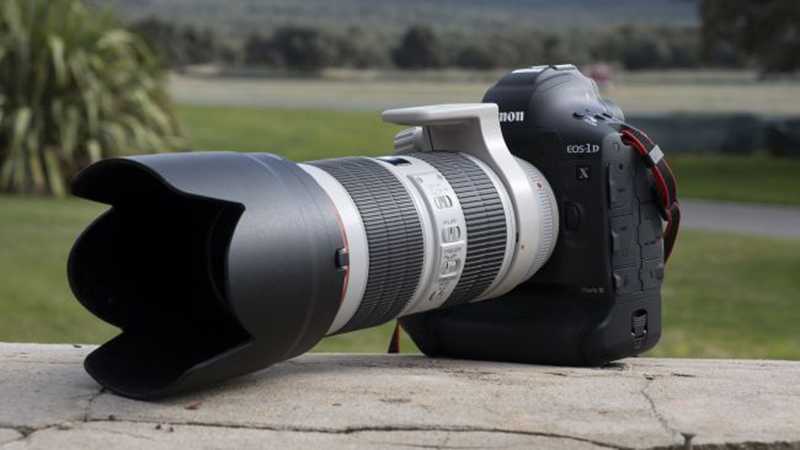
Focus-mode selector
- Autofocus Mode
- AF-Area Mode
- Focus Lock
Autofocus Mode
The following autofocus modes can be selected during viewfinder photography:
The following autofocus modes can be selected during live view:
Autofocus mode can be selected by pressing the AF-mode button and rotating the main command dial until the desired setting is displayed.
AF-mode button
Main command dial
Control panel
Viewfinder
Monitor
In AF-C mode or when continuous-servo autofocus is selected in
For information on:
- Using focus priority in continuous-servo AF, see A > Custom Setting a1 (AF-C priority selection, 0 AF-C Priority Selection).

- Using release priority in single-servo AF, see A > Custom Setting a2 (AF-S priority selection, 0 AF-S Priority Selection).
- Using the sub-command dial to choose the focus mode, see A > Custom Setting f3 (Customize command dials) > Change main/sub (0 Customize Command Dials).
AF-Area Mode
AF-area mode controls how the camera selects the focus-point for autofocus. The following options are available during viewfinder photography:
- Single-point AF: Select the focus point; the camera will focus on the subject in the selected focus point only. Use with stationary subjects.
Dynamic-area AF: Select the focus point. In AF-A and AF-C focus modes, the camera will focus based on information from surrounding focus points if the subject briefly leaves the selected point. The number of focus points varies with the mode selected:
- 9-point dynamic-area AF: Choose when there is time to compose the photograph or when photographing subjects that are moving predictably (e.
 g., runners or race cars on a track).
g., runners or race cars on a track). - 21-point dynamic-area AF: Choose when photographing subjects that are moving unpredictably (e.g., players at a football game).
- 51-point dynamic-area AF: Choose when photographing subjects that are moving quickly and can not be easily framed in the viewfinder (e.g., birds).
- 9-point dynamic-area AF: Choose when there is time to compose the photograph or when photographing subjects that are moving predictably (e.
3D-tracking: Select the focus point. In AF-A and AF-C focus modes, the camera will track subjects that leave the selected focus point and select new focus points as required. Use to quickly compose pictures with subjects that are moving erratically from side to side (e.g., tennis players). If the subject leaves viewfinder, remove your finger from the shutter-release button and recompose the photograph with the subject in the selected focus point.
- Group-area AF: The camera focuses using a group of focus points selected by the user, reducing the risk of the camera focusing on the background instead of on the main subject.
 Choose for subjects that are difficult to photograph using a single focus point. If faces are detected in single-servo AF (AF-S or single-servo AF selected in AF-A), the camera will give priority to portrait subjects.
Choose for subjects that are difficult to photograph using a single focus point. If faces are detected in single-servo AF (AF-S or single-servo AF selected in AF-A), the camera will give priority to portrait subjects.
Auto-area AF: The camera automatically detects the subject and selects the focus point (in the case of portrait subjects, the camera is able to distinguish the subject from the background for improved subject detection). The active focus points are highlighted briefly after the camera focuses; in AF-C and AF-A modes, the main focus point remains highlighted after the other focus points have turned off.
When the shutter-release button is pressed halfway, the colors in the area surrounding the focus point are stored in the camera. Consequently 3D-tracking may not produce the desired results with subjects that are similar in color to the background or that occupy a very small area of the frame.
The following AF-area modes can be selected during live view:
! Face-priority AF: Use for portraits. The camera automatically detects and focuses on portrait subjects; the selected subject is indicated by a double yellow border (if multiple faces are detected, the camera will focus on the closest subject; to choose a different subject, use the multi selector). If the camera can no longer detect the subject (because, for example, the subject has turned to face away from the camera), the border will no longer be displayed. If you touch the monitor, the camera will focus on the face closest to your finger and take a photograph when you lift your finger from the screen.
$ Wide-area AF: Use for hand-held shots of landscapes and other non-portrait subjects.
% Normal-area AF: Use for pin-point focus on a selected spot in the frame. A tripod is recommended.
& Subject-tracking AF: Use the multi selector to position the focus point over your subject and press J to start tracking. The focus point will track the selected subject as it moves through the frame. To end tracking, press J again. Alternatively, you can start tracking by touching your subject in the monitor; to end tracking and take a photograph, lift your finger from the screen. If tracking is already in progress, touching the monitor anywhere will cause the camera to focus on the current subject, and a photo will be taken when you lift your finger from the screen. Note that the camera may be unable to track subjects if they move quickly, leave the frame or are obscured by other objects, change visibly in size, color, or brightness, or are too small, too large, too bright, too dark, or similar in color or brightness to the background.
The focus point will track the selected subject as it moves through the frame. To end tracking, press J again. Alternatively, you can start tracking by touching your subject in the monitor; to end tracking and take a photograph, lift your finger from the screen. If tracking is already in progress, touching the monitor anywhere will cause the camera to focus on the current subject, and a photo will be taken when you lift your finger from the screen. Note that the camera may be unable to track subjects if they move quickly, leave the frame or are obscured by other objects, change visibly in size, color, or brightness, or are too small, too large, too bright, too dark, or similar in color or brightness to the background.
The multi selector can be used to select the focus point. Rotating the focus selector lock to L disables manual focus-point selection.
Focus selector lock
AF-area mode can be selected by pressing the AF-mode button and rotating the sub-command dial until the desired setting is displayed.
AF-mode button
Sub-command dial
Control panel
Viewfinder
Monitor
AF-area mode is shown in the control panel and viewfinder.
| AF-area mode | Control panel | Viewfinder | Viewfinder focus-point display |
|---|---|---|---|
| Single-point AF | |||
| 9-point dynamic-area AF * | |||
| 21-point dynamic-area AF * | |||
| 51-point dynamic-area AF * | |||
| 3D-tracking | |||
| Group-area AF | |||
| Auto-area AF |
Only active focus point is displayed in the viewfinder. Remaining focus points provide information to assist focus operation.
If 3D-tracking or auto-area AF is selected for AF-area mode when an AF-S/AF-I teleconverter is used, single-point AF will automatically be selected at combined apertures slower than f/5. 6.
6.
Use an AF-S or AF-P lens. The desired results may not be achieved with other lenses or teleconverters. Note that in live view, autofocus is slower and the monitor may brighten or darken while the camera focuses. The focus point may sometimes be displayed in green when the camera is unable to focus. The camera may be unable to focus in the following situations:
- The subject contains lines parallel to the long edge of the frame
- The subject lacks contrast
- The subject in the focus point contains areas of sharply contrasting brightness, or includes spot lighting or a neon sign or other light source that changes in brightness
- Flicker or banding appears under fluorescent, mercury-vapor, sodium-vapor, or similar lighting
- A cross (star) filter or other special filter is used
- The subject appears smaller than the focus point
- The subject is dominated by regular geometric patterns (e.g., blinds or a row of windows in a skyscraper)
- The subject is moving
Except in subject-tracking AF, pressing J during focus-point selection selects the center focus point. In subject-tracking AF, pressing J starts subject tracking instead. Manual focus-point selection is not available in auto-area AF.
In subject-tracking AF, pressing J starts subject tracking instead. Manual focus-point selection is not available in auto-area AF.
Viewfinder photography—For information on:
- Choosing the number of focus points that can be selected using the multi selector, see A > Custom Setting a4 (Number of focus points, 0 Number of Focus Points).
- Choosing separate focus points for vertical and horizontal orientations, see A > Custom Setting a5 (Store points by orientation, 0 Store Points by Orientation).
- Setting focus-point selection to “wrap around,” see A > Custom Setting a7 (Focus point wrap-around, 0 Focus Point Wrap-Around).
Viewfinder photography/live view: For information on using the main command dial to choose the AF-area mode, see A > Custom Setting f3 (Customize command dials) > Change main/sub (0 Customize Command Dials).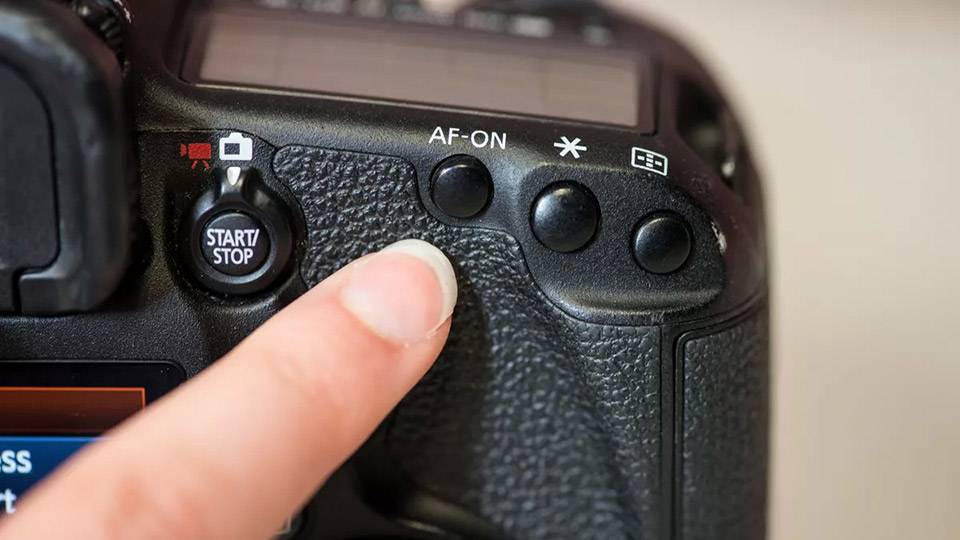
Focus Lock
Focus lock can be used to change the composition after focusing, making it possible to focus on a subject that will not be in a focus point in the final composition. If the camera is unable to focus using autofocus (0 Getting Good Results with Autofocus), focus lock can also be used to recompose the photograph after focusing on another object at the same distance as your original subject. Focus lock is most effective when an option other than auto-area AF is selected for AF-area mode (0 AF-Area Mode).
Focus.
Position the subject in the selected focus point and press the shutter-release button halfway to initiate focus. Check that the in-focus indicator (I) appears in the viewfinder (viewfinder photography) or that the focus point has turned green (live view).
Viewfinder photography
Live view
Lock focus.
AF-A and AF-C focus modes (viewfinder photography): With the shutter-release button pressed halfway (), press the A AE-L/AF-L button () to lock both focus and exposure (an AE-L icon will be displayed in the viewfinder).
 Focus will remain locked while the A AE-L/AF-L button is pressed, even if you later remove your finger from the shutter-release button.
Focus will remain locked while the A AE-L/AF-L button is pressed, even if you later remove your finger from the shutter-release button.Shutter-release button
A AE-L/AF-L button
AF-S (viewfinder photography) and live view: Focus locks automatically and remain locked until you remove your finger from the shutter-release button. Focus can also be locked by pressing the A AE-L/AF-L button (see above).
Recompose the photograph and shoot.
Focus will remain locked between shots if you keep the shutter-release button pressed halfway (AF-S and live view) or keep the A AE-L/AF-L button pressed, allowing several photographs in succession to be taken at the same focus setting.
Viewfinder photography
Live view
Do not change the distance between the camera and the subject while focus lock is in effect.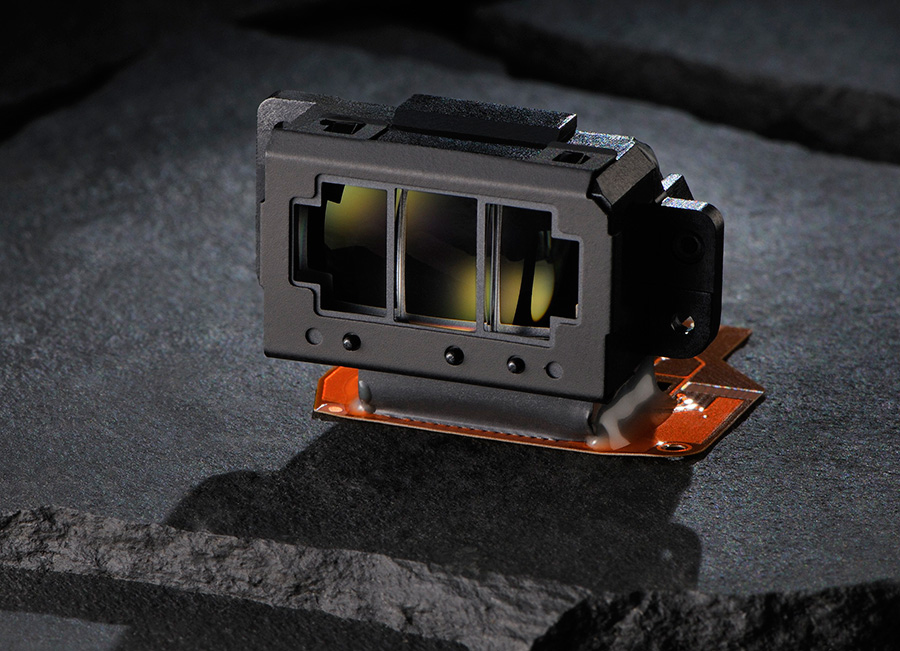 If the subject moves, focus again at the new distance.
If the subject moves, focus again at the new distance.
For information on using the shutter-release button to lock exposure, see A > Custom Setting c1 (Shutter-release button AE-L, 0 Shutter-Release Button AE-L).
Autofocus does not perform well under the conditions listed below. The shutter release may be disabled if the camera is unable to focus under these conditions, or the in-focus indicator (I) may be displayed and the camera may sound a beep, allowing the shutter to be released even when the subject is not in focus. In these cases, focus manually (0 Manual Focus) or use focus lock (0 Focus Lock) to focus on another subject at the same distance and then recompose the photograph.
There is little or no contrast between the subject and the background.
Example: Subject is the same color as the background.
The focus point contains objects at different distances from the camera.
Example: Subject is inside a cage.
The subject is dominated by regular geometric patterns.
Example: Blinds or a row of windows in a skyscraper.
The focus point contains areas of sharply contrasting brightness.
Example: Subject is half in the shade.
Background objects appear larger than the subject.
Example: A building is in the frame behind the subject.
The subject contains many fine details.
Example: A field of flowers or other subjects that are small or lack variation in brightness.
Автофокус Определение и значение — Merriam-Webster
au·to·fo·cus ˈȯ-tō-ˌfō-kəs
: система автоматической фокусировки (как на фотоаппарате)
автофокус глагол
Примеры предложений
Недавние примеры в Интернете
Гуру дизайна оценят выдвижной защитный чехол из прочной полирезины, скрывающий 8-миллиметровый объектив с автофокусом . Кэтлин Уиллкокс, 9 лет0013 Популярная механика , 10 ноября 2022 г.
Отличный динамический диапазон, сверхбыстрая система автофокусировки и отличное качество видео.
Эрик Рейвенскрафт, WIRED , 27 октября 2022 г.
Кроме того, селфи-камера TrueDepth также имеет автофокус , чего нет в моделях iPhone 13 Pro.
Крис Смит, BGR , 14 октября 2022 г.
Сверхширокоугольный объектив оснащен функциями автофокусировки и для поддержки новых функций, включая макрофокус, который улавливает мелкие детали.
Саманта Мерфи Келли, CNN , 6 октября 2022 г.
Одной из самых недооцененных функций 14 Plus может быть новая камера TrueDepth, которая теперь имеет автофокус .
Кэтлин Уиллкокс, 9 лет0013 Популярная механика , 10 ноября 2022 г.
Отличный динамический диапазон, сверхбыстрая система автофокусировки и отличное качество видео.
Эрик Рейвенскрафт, WIRED , 27 октября 2022 г.
Кроме того, селфи-камера TrueDepth также имеет автофокус , чего нет в моделях iPhone 13 Pro.
Крис Смит, BGR , 14 октября 2022 г.
Сверхширокоугольный объектив оснащен функциями автофокусировки и для поддержки новых функций, включая макрофокус, который улавливает мелкие детали.
Саманта Мерфи Келли, CNN , 6 октября 2022 г.
Одной из самых недооцененных функций 14 Plus может быть новая камера TrueDepth, которая теперь имеет автофокус .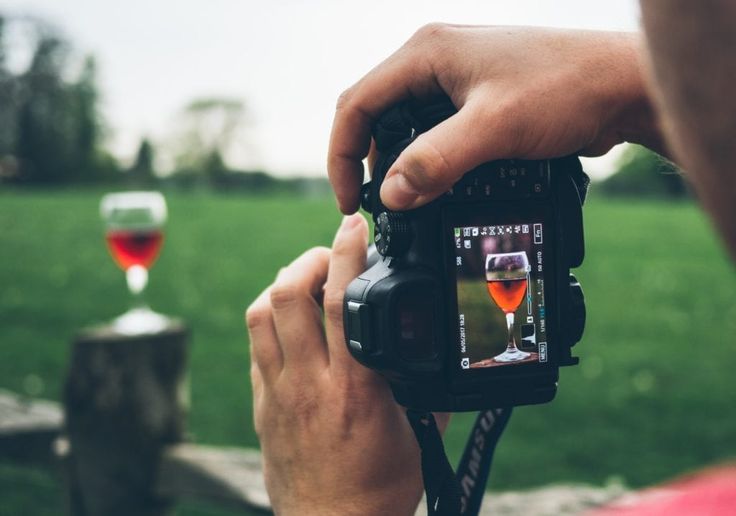 Хосе Адорно, 9 лет0013 BGR , 6 октября 2022 г.
Широкоугольный Pro теперь имеет автофокуса , который также поддерживает макрорежим.
Рон Амадео, Ars Technica , 6 октября 2022 г.
Система автофокусировки Sony по-прежнему, пожалуй, лучшая в игре, и компания заявляет, что Alpha 1 еще больше ускоряет автофокусировку по глазам при фокусировке на людях и домашних животных.
Крис Уэлч, 9 лет0013 Грань , 26 января 2021 г.
А камера TrueDepth претерпела некоторые изменения в моделях Pro: более яркая диафрагма f/1.9 и поддержка автофокуса .
Сэмюэл Аксон, Ars Technica , 21 сентября 2022 г.
Узнать больше
Хосе Адорно, 9 лет0013 BGR , 6 октября 2022 г.
Широкоугольный Pro теперь имеет автофокуса , который также поддерживает макрорежим.
Рон Амадео, Ars Technica , 6 октября 2022 г.
Система автофокусировки Sony по-прежнему, пожалуй, лучшая в игре, и компания заявляет, что Alpha 1 еще больше ускоряет автофокусировку по глазам при фокусировке на людях и домашних животных.
Крис Уэлч, 9 лет0013 Грань , 26 января 2021 г.
А камера TrueDepth претерпела некоторые изменения в моделях Pro: более яркая диафрагма f/1.9 и поддержка автофокуса .
Сэмюэл Аксон, Ars Technica , 21 сентября 2022 г.
Узнать больше
Эти примеры предложений автоматически выбираются из различных онлайн-источников новостей, чтобы отразить текущее использование слова «автофокус».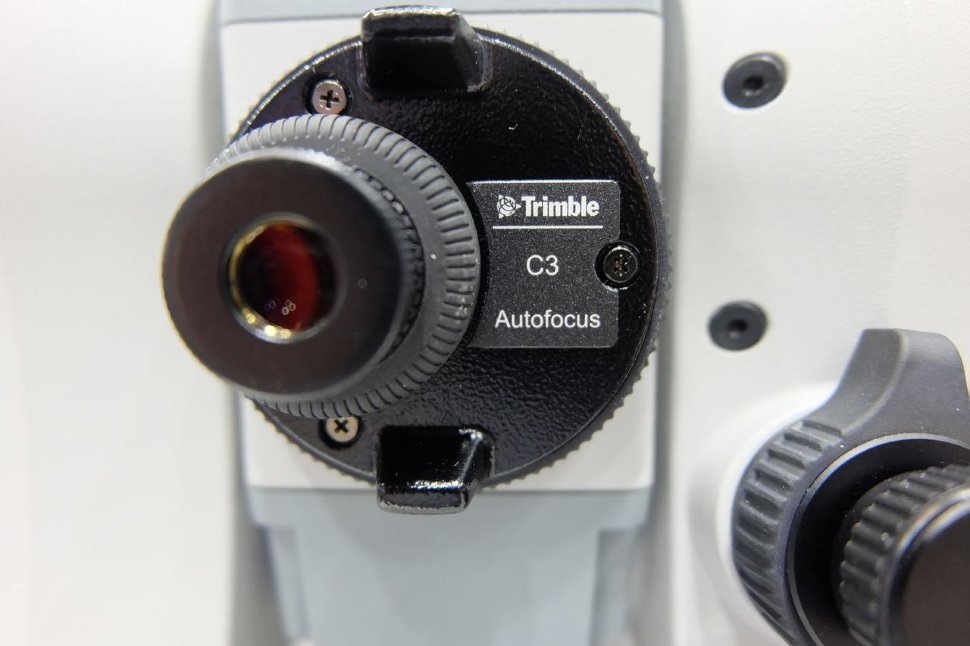 Мнения, выраженные в примерах, не отражают точку зрения Merriam-Webster или ее редакторов. Отправьте нам отзыв.
Мнения, выраженные в примерах, не отражают точку зрения Merriam-Webster или ее редакторов. Отправьте нам отзыв.
История слов
Первое известное использование
Около 1937 г., в значении, определенном выше
Путешественник во времени
Первое известное использование автофокус был около 1937 г.
Посмотреть другие слова того же года автофокусный
автофокус
нагартовка
Посмотреть другие записи рядом
Процитировать эту запись
Стиль
MLAЧикагоAPAMМерриам-Вебстер
«Автофокус». Словарь Merriam-Webster.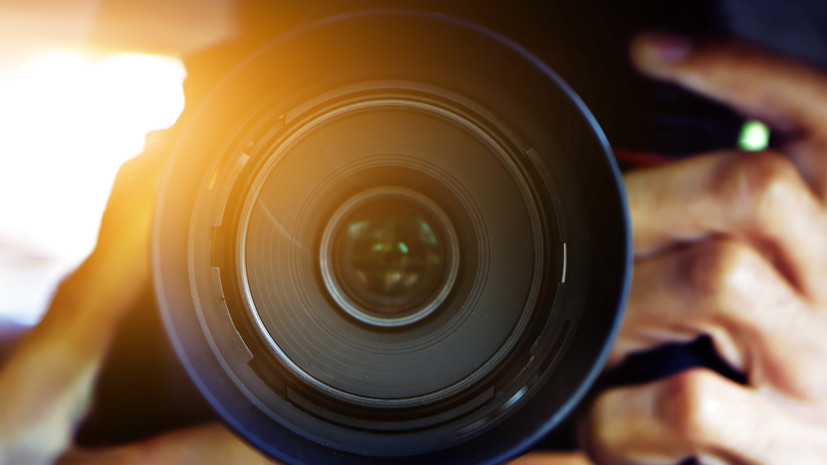 com , Merriam-Webster, https://www.merriam-webster.com/dictionary/autofocus. По состоянию на 22 ноября 2022 г.
com , Merriam-Webster, https://www.merriam-webster.com/dictionary/autofocus. По состоянию на 22 ноября 2022 г.
Ссылка на копию
Последнее обновление: — Обновлены примеры предложений
Подпишитесь на крупнейший словарь Америки и получите тысячи дополнительных определений и расширенный поиск без рекламы!
Полный текст Merriam-Webster
В чем разница между режимом автофокусировки (AF) и режимом ручной фокусировки (MF)?
Базовые знания → Режим автофокуса (AF) и режим ручной фокусировки (MF)
Автофокус (AF) — это функция камеры, которая автоматически фокусируется на объекте. Эта функция есть у большинства обычных цифровых камер. Существуют различные методы автофокусировки, и доступные методы различаются в зависимости от модели вашей камеры. Используйте различные методы в зависимости от сцены или объекта, который вы хотите снять.
Эта функция есть у большинства обычных цифровых камер. Существуют различные методы автофокусировки, и доступные методы различаются в зависимости от модели вашей камеры. Используйте различные методы в зависимости от сцены или объекта, который вы хотите снять.
Методы автофокусировки
В этом разделе описываются методы автофокусировки серии α.
Два основных метода автофокусировки — это AF-S и AF-C, и они имеют разные операции фокусировки после нажатия кнопки спуска затвора наполовину.
AF-S (Покадровый AF)
Автофокусировка срабатывает, когда кнопка спуска затвора нажата наполовину. Как только объект оказывается в фокусе, фокус блокируется.
Он подходит для съемки неподвижных объектов, таких как пейзажи или моментальные снимки.
AF-C (непрерывная автофокусировка)
Автофокусировка продолжает работать и продолжает регулировать фокус, пока кнопка спуска затвора нажата и удерживается наполовину.
Он подходит для съемки движущихся объектов, таких как спортивные или железнодорожные фотографии.
AF-A (автоматическая AF)
При нажатии кнопки спуска затвора наполовину камера автоматически распознает, движется объект или нет, и соответственно переключает режим AF между AF-S и AF-C.
Используйте этот режим для одновременной съемки разных объектов или для того, чтобы не переключать режим автофокусировки вручную.
Прямая ручная фокусировка (DMF)
Вы можете выполнить точную настройку вручную после выполнения автоматической фокусировки, что позволит вам сфокусироваться на объекте быстрее, чем при использовании ручной фокусировки с самого начала. Это удобно в таких ситуациях, как макросъемка.
Ручная фокусировка (MF)
Ручная фокусировка (MF) — это функция, позволяющая фотографу настраивать фокус вручную вместо камеры.
Хотя съемка с автофокусом (AF) более типична для цифровых камер, MF эффективна, когда фокусировка затруднена с помощью автофокуса, например, при макросъемке.
В MF вы можете отрегулировать положение фокусировки, поворачивая кольцо фокусировки на объективе.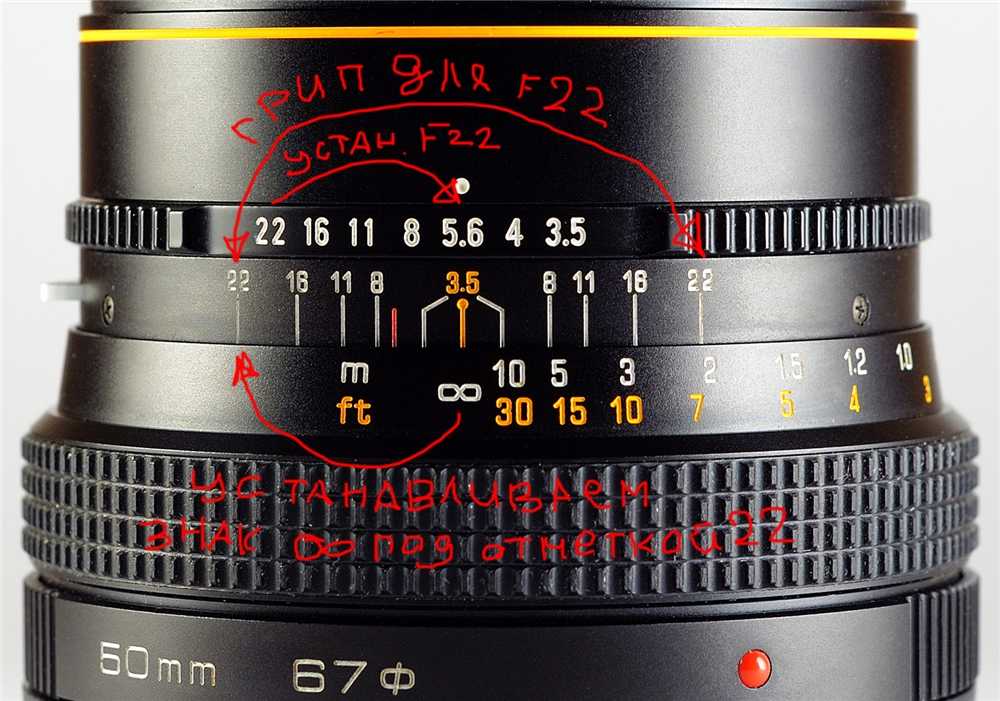 Обратитесь к Инструкции по эксплуатации или Руководству по эксплуатации вашей камеры, чтобы узнать, как переключиться в режим ручной фокусировки или как выполнить подробные операции.
Обратитесь к Инструкции по эксплуатации или Руководству по эксплуатации вашей камеры, чтобы узнать, как переключиться в режим ручной фокусировки или как выполнить подробные операции.
Сверху — объектив SEL24105G, а деталь A — его кольцо фокусировки. Когда камера установлена в режим ручной фокусировки, вы можете отрегулировать фокус вручную, поворачивая это кольцо фокусировки.
Объектив: SAL50M28 / Фокусное расстояние: 50 мм / F-число: 4,0
Фотография выше сделана с макрообъективом САЛ50М28. В центре внимания находится капля воды слева спереди, а передний и задний план сильно расфокусированы. Когда вам нужно точно настроить фокус на небольшой области, как в этом примере, рекомендуется использовать MF. MF также полезен, когда камера не может найти желаемое положение фокусировки с автофокусом.
Увеличитель фокусировки и помощь при ручной фокусировке
При съемке с ручной фокусировкой (MF) можно использовать функции увеличения фокуса и помощи при ручной фокусировке, чтобы проверить, находится ли объект в фокусе.

 gstatic.com" crossorigin>
<link href="https://fonts.googleapis.com/css2?family=Istok+Web:wght@400;700&display=swap" rel="stylesheet">
<link href="https://cdn.jsdelivr.net/npm/
gstatic.com" crossorigin>
<link href="https://fonts.googleapis.com/css2?family=Istok+Web:wght@400;700&display=swap" rel="stylesheet">
<link href="https://cdn.jsdelivr.net/npm/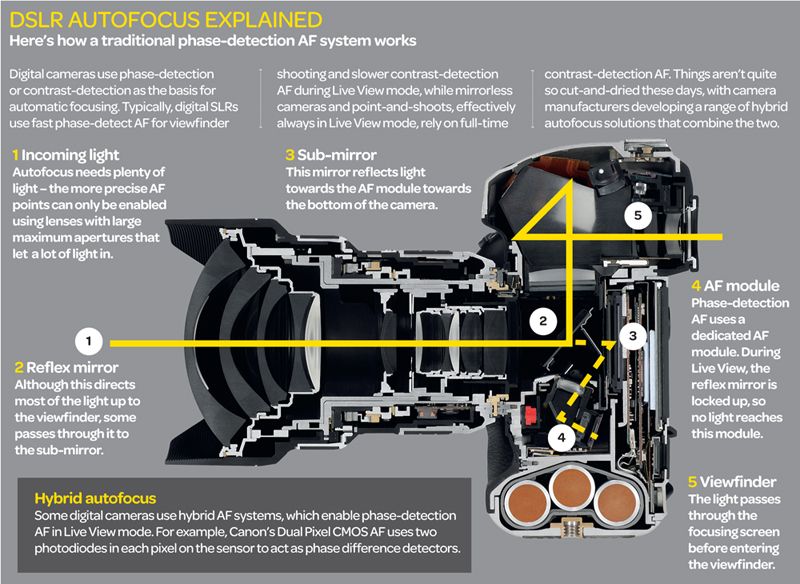
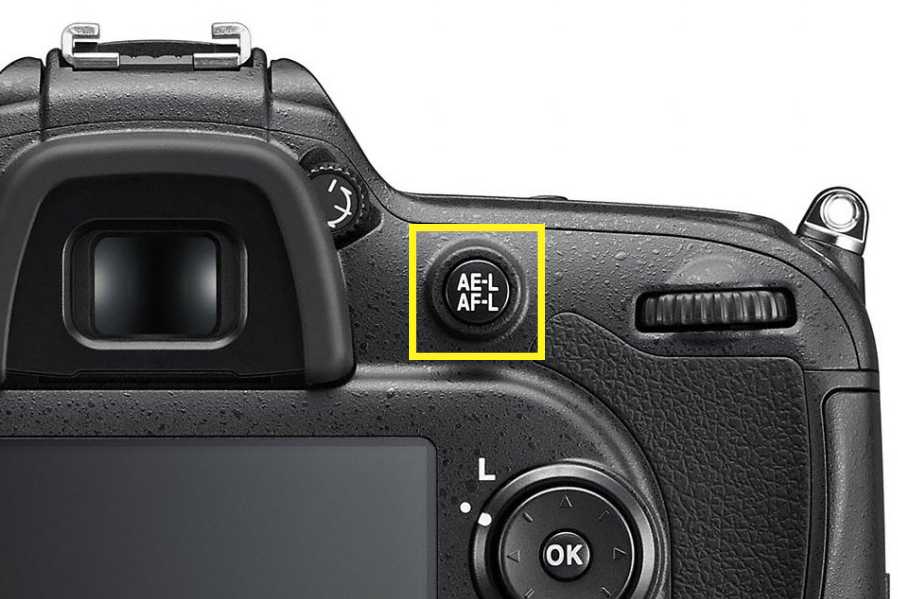 getElementById('signUpModal')
const username = document.getElementById('username')
signUpModal.addEventListener('shown.bs.modal', () => {
username.focus()
})
getElementById('signUpModal')
const username = document.getElementById('username')
signUpModal.addEventListener('shown.bs.modal', () => {
username.focus()
})
 g., runners or race cars on a track).
g., runners or race cars on a track). Choose for subjects that are difficult to photograph using a single focus point. If faces are detected in single-servo AF (AF-S or single-servo AF selected in AF-A), the camera will give priority to portrait subjects.
Choose for subjects that are difficult to photograph using a single focus point. If faces are detected in single-servo AF (AF-S or single-servo AF selected in AF-A), the camera will give priority to portrait subjects. Focus will remain locked while the A AE-L/AF-L button is pressed, even if you later remove your finger from the shutter-release button.
Focus will remain locked while the A AE-L/AF-L button is pressed, even if you later remove your finger from the shutter-release button.